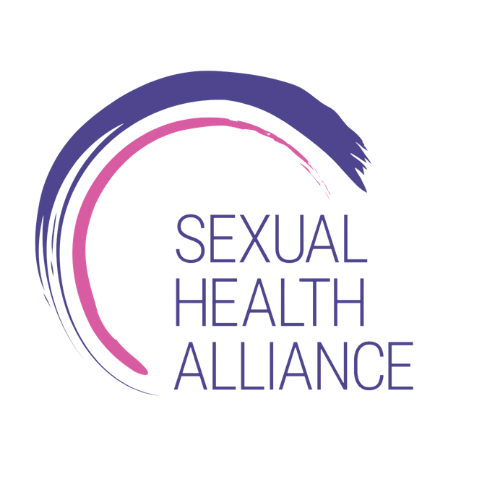In June 2022, the U.S. Supreme Court revoked the constitutional right to abortion through Dobbs v. Jackson Women’s Health Organization, overturning Roe v. Wade. Since then, many states have implemented or enforced restrictive abortion bans. Research has continued to show the far-reaching and long-lasting impacts of this decision on public health, sexual and reproductive rights, and overall well-being.
Dobbs did not happen in a vacuum. It has reshaped the healthcare landscape in profound ways, extending far beyond immediate access to abortion. Three years later, we now see clearer evidence of its serious consequences to healthcare access, mental health, and sexual and reproductive health, which has implications for sexual health professionals.
In this blog, we review some of the emerging effects of this landmark decision.
Overview of Abortion in the USA:
The legal landscape is constantly changing, and abortion laws differ from state to state. Here’s where things currently stand:
Bans with limited exceptions*: 41 states
Gestational duration bans (based on length of time): 29 states
7 states ban at or before 18 weeks
22 states ban at some point after 18 weeks
Total abortion bans: 12 states
No gestational restrictions: 9 states + Washington, DC
For a state-by-state overview, see Guttmacher’s interactive map.
*It is important to note that “limited exceptions” are often narrow and difficult to access. Previously referred to as loopholes, these laws seem more lenient than they often actually are.
Despite these restrictions, abortion rates have actually gone up. In 2023, more than 1 million abortions were reported, an 11% increase from 2020. Banning abortion doesn’t stop people from seeking care. It just makes access harder, more expensive, and more unequal.
Limited access to Abortion in the USA
Since Dobbs, dozens of clinics have shut their doors. Within 100 days of the Dobbs decision, 66 clinics across 15 states stopped providing abortion services. Many others have closed even in states where abortion is technically legal, largely because of funding cuts, restrictions on Medicaid, and political pressure.
The consequences are huge:
Patients are traveling farther, sometimes across multiple states, for care. Nearly 1 in 5 abortion patients in 2023 left their home state, up from 1 in 10 just three years earlier.
Abortions cost money and these additional barriers only add to this.
Low-income, rural, and marginalized communities are hit hardest.
And this isn’t just a U.S. issue. Because U.S. policy is often seen as a signal for global reproductive rights, restrictive shifts here can have international consequences, such as recent administration threats to destroy millions of dollars’ worth of contraceptives meant for low-income countries.
Mental Health Impacts
The mental health fallout is real, and it’s growing. A number of peer-reviewed studies have illustrated the negative effects of the Dobbs decision.
Anxiety and depression: People in states with trigger bans, meaning restrictions went into place after federal regulations were enforced, reported spikes in distress after the ruling including heightened anxiety and depression symptoms and more mental distress immediately following and months after the ruling.
Being denied care: Women turned away from abortion services reported more anxiety, lower self-esteem, and less life satisfaction than those who received care.
Suicide risk: A 2025 study found excess suicides among reproductive-aged women in states with new restrictions.
Providers are feeling the strain too. Many report moral distress, burnout, and fear of criminalization. For sexual health professionals, this means caring for patients under extreme stress while managing your own.
Abortion in the USA: Sexual and Reproductive Health Impacts
Abortion restrictions affect more than abortion:
Self-managed abortion is rising: Between January 2022 and mid-2023, the percentage of women who had ever attempted one rose from 2.4% to 3.3%. Some accessed pills online, others used alcohol, herbs, or other substances and others relied on more dangerous physical methods (punching oneself).
Contraception access is uneven: Confusing laws and funding gaps mean family planning services are harder to navigate, with marginalized populations being the most affected.
Sexual decision-making is shifting. When reproductive rights are uncertain, patients may change their sexual behavior, delay care, or avoid healthcare systems altogether.
These disruptions carry long-term consequences for autonomy, safety, and health equity.
What This Means for Sexual Health Professionals
For those of us working in sexual health, Dobbs has changed the ground beneath our feet.
Research shows there are clear gaps in training for clinical and counseling psychology trainees on sexual and reproductive health (SRH). Topics like contraception, safer sex practices, sexuality, and sexual issues in relationships often come up in clinical work, yet many providers have reported limited training. These gaps in education can harm clients, reinforcing stigma and negative sexual beliefs.
This is where sexual health professionals step in. The role is evolving, and it’s more vital than ever:
Counseling patients is harder: Laws and research are changing quickly. Staying informed is critical while still helping patients make safe, informed choices.
Stakes are higher: Know your state’s abortion laws and federal policies to both guide patients and protect yourself.
Privacy is shifting. Health data and confidentiality requirements around abortion care are evolving. Communicate any limits to confidentiality with clients.
Familiarize yourself with guidelines: Health data privacy has also shifted. Understand any requirements from you and communicate any limits to confidentiality related to abortion care
Reflect on your knowledge. Seek out additional resources and training when needed. Programs like SHA’s certification courses can build confidence and skills.
Demand is growing. Patients are carrying more stress, fear, and trauma. They need clarity, compassion, and support more than ever.
Being an advocate: Beyond clinical work, professionals are being called to speak up, share accurate information, and fight for resources.
The weight is heavy, but the role is critical. Sexual health professionals are not only providers; they are educators, advocates, and trusted sources in a shifting landscape.
Conclusion
Three years after Dobbs, one truth is clear: abortions will always happen. The real question is whether they will be safe, accessible, and equitable.
This decision has changed the realities of sexual and reproductive health in the U.S., and the ripple effects will be felt for decades. For sexual health professionals, this is both a challenge and a call to action; it is on us to support patients, push for justice, and advocate for accessible and equitable sexual and reproductive healthcare .
Additional resources
Written by Emma Sell-Goodhand, MPH
Emma is a doctoral student and Global One Health Fellow at North Carolina State University studying adolescent sexual health. She brings prior experience as a Technical Advisor at the World Health Organization.
Want to become an in-demand sexual health professional? Learn more about becoming certified with SHA!




